Posted by Managementguru in Human Resource, Principles of Management, Training & Development
on Mar 18th, 2014 | 0 comments
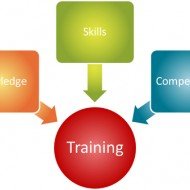
Employee Training – Train Your #Employees to Tone up their Spirit What is Training & Development: process to obtain or transfer #knowledge, #skills and abilities needed to carry out a specific activity or task. Human Resource training is not at all a complex process; with the right kind of supervisors, who impart training and their subordinates being enthusiastic about learning, it seems to be quite an easy job. But, some firms fail to achieve the desired productivity, in spite of good training programmes and availability of efficient workers. The biggest problem being, the failure to impart relevant training, by identifying and analyzing the training needs which too often is not the case. To be successful, firms have to adopt a systematic approach to training process. Training fills the gap between what someone can do and what he should be able to do. The first aim of training is to ensure that, as quickly as possible people can reach an acceptance level in their jobs. Training then builds on this foundation by enhancing skills and knowledge as required to improve performance in the present job or to develop potential for the future. Steps involved in systematic approach of training: 1) Identifying and analyzing training needs: Training should always fall in line with the #objectives of the organization to be achieved and it should be relevant to the context. Running training programmes just for the sake of running it, without defining the purpose, or sending the trainees for a workshop that has nothing to do with what the trainees really need to learn -all these are inappropriate methods of training and it makes the trainees lose their focus and direction. Another problem you will meet in the off-the job training is that, transferring the knowledge to action in the work place. If the objectives are not specified and appraised properly to the trainees, they will not be able to satisfy your expectations. So, a thorough analysis of what people need to know as trainees at different functional levels proves useful in saving much time and labor of the firm. 2) Job analysis-a basis for identification of training needs: The basis for training starts from job analysis, where the organization has to be quite prudent about its specifications and expectations well defined. The indicated specifications may be about, Knowledge -what the worker needs to know in terms of professional, technical, technological, commercial aspects. Skills-Manual, intellectual, perceptual, analytical or social which depends on the nature of the job. A top level employee needs to possess more analytical skills backed up by rational thinking, whereas a lower level employee is only expected to deliver his technical skills properly. Attitudes: The disposition to behave or to perform in accordance with the requirement of the work. This is one of the most important aspects that is neglected by most of the organizations by sheer oversight. If a customer is not properly received in a boutique shop or a restaurant, think what will be the response and reaction of the customer? If a worker does not pay due respect to his superior or boss, what are the chances of his career advancement? Whether it is a production environment or a market environment, firms must teach the trainees to conform to the guidelines regarding #attitude. 3) Prepare your training plans based on the objectives: Decide on the content of the course, as established by job and task analysis and information from performance appraisals. Decide on the training techniques, which may be, Job instruction On-the -job training Coaching Lecturing Computer based training Action learning Interactive video etc., which are a combination of on- the job and off-the job training...

Posted by Managementguru in Economics, Financial Management, Principles of Management
on Mar 15th, 2014 | 0 comments
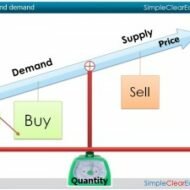
Demand vs. Supply- Parameter deciding market equilibrium The success of economic freedom of a country is naturally reflected in the form of human prosperity. Countries like India are evidencing a consistent increase in their annual GDP rates which obviously must have reduced the population percentage living below poverty line; yet this has not been accomplished and the question is, is it really something to do with the economic model or is it the bureaucracy and inefficiency the root cause for the strain in the economy? Flow of Economic Activity: This discussion aims at shedding some light on the flow of economic activity in a free market economy. The elemental players or contributors in a free enterprise market economy are individuals and firms. Individuals who own or control resources (in the form of labor, capital or natural resources), sell these resources to firms and obtain money. These resources which serve as necessary inputs in the production process add value to firms. The money received by individuals is called factor payment which is utilized to fulfill their consumption demands of goods and services. Two distinct areas of interaction exist between the individuals and firms. One is the product market where the products are bought and sold and the other being a market for production factors, where the inputs such as labor, capital and natural resources are traded. What is the activity in a product market? Fundamentally business is all about demand vs. supply. The consumers’ demand has to be met with by the manufacturers. Profit is the primary motive of any firm and the priority of a firm lies in responding to the demands of the consumer market by supplying goods and services to the potential and prospective buyers. Input costs and production technology are the determinants of supply conditions. People’s preferences and earnings decide the elasticity of market demand. The price of the product and quantity sold is a result of the interaction between demand and supply. In a product market money flows from consumers to firms and goods and services flow from firms to consumers. What happens in a factor market? The reverse of those conditions in the product market are seen in a factor market. Here the individual becomes the supplier of production factors and hence the money flows from firms to individuals and factors of production from individuals to firms. Prices and profits control the flow of money and resources through the factor market and flow of money and goods through the product market. What is a Free Market Enterprise? Added advantage of a free market enterprise is that, the effortlessness with which one can enter and exit the market. The activity flow proves advantageous to each person involved .Firms make profits, individuals are satisfied of their consumption demand for goods and services, resource owners are compensated for their services. If an individual is not able to benefit by trading in these markets, he or she is not required to do so or free to leave the market which ensures that nobody is made worse off by voluntary trade in these markets. Essentially countries have to go in for suitable economic restructuring that promotes equality and even distribution of wealth. Wall Street protest in US is a clear-cut indication of strained market economy which is a result of people’s fury against the prevailing economic...

Posted by Managementguru in Economics, Financial Management, International Business, Marketing, Project Management
on Mar 11th, 2014 | 0 comments
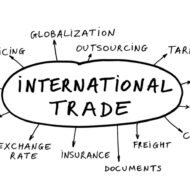
What is Trade? Trade is the exchange of commodity and services. International trade represents business transactions taking place at the global level, and it is fundamentally different from domestic trade. Trade at international level demands huge investments, network of franchisees and proficient people to run the show. Many corporate giants are trying to capture Asian markets, especially Indian market, which has become the industrial hub for such economic activities. Economic liberalization has been the focus of many developing countries for the past two decades and this has allowed multinational companies with huge investment potential to enrich the weaker economies. What is International Trade? International trade tries to generate more foreign exchange, which is always good for the economy. Say, if a country has rich resources of petroleum, naturally it will try to sell the surplus to countries not endowed with such natural resources. That is why Middle East nations are prosperous and economically independent. The diversity in productive possibilities in different countries is due to the presence of limited natural resources. When a country gets a head start in a particular product, it can become the high volume, low cost producer. The economies of scale give it a significant advantage over other countries, which find it cheaper to buy from the leading producers than to manufacture the product themselves. Barriers for Effective Trade Every nation must try to specialize in the production and export of those commodities, which are available in plenty and must import such products in the production of which they have a resource deficiency. It should be remembered that there are severe man made barriers in international trade such as, export duties, quotas, exchange restrictions etc.,that hinder the free movement of products. International Trade and Finance Nevertheless, it is not also possible for a country to produce domestically every kind of product. In spite of all these restraining factors, global trade is thriving, thanks to the advanced technological aspects introduced in communication and faster means of transportation. Distance is no more a constraint and the world has become one small global village. Foreign Exchange Issues All domestic transactions, say in a country like India take place in rupees, which is the legal tender in the country. However, in its trade with other countries like USA, Germany, Japan, France and Britain, the payments have to be made in terms of dollars, marks, yens, francs and pound sterling respectively. The mechanism through which payments are effected between two countries having different currency systems is called foreign exchange. It may be also defined as the exchange of money or credit in one country for money or credit in another. Foreign exchange rates can affect relative prices and net exports. A rise in the a nation’s foreign exchange will depress that nation’s net exports and output, while a fall in the foreign exchange rate will increase net exports and output. Because of the significant impact of exchange rates on national economies, countries have entered into agreements on international monetary...

Posted by Managementguru in Business Management, Principles of Management, Training & Development
on Mar 7th, 2014 | 0 comments
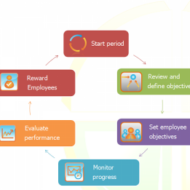
MBO BY PETER DRUCKER Peter Ferdinand Drucker was an influential writer, management consultant, and self-described “social ecologist. Harvard Business Review honored Drucker in the June 2004 with his seventh McKinsey Award for his article, “What Makes an Effective Executive”, the most awarded to one person. The Concept of MBO: Management by objectives was a concept introduced by the doyen of management, Peter Drucker. This concept involves formulation of objectives for the entire organization and which are then broken down into divisional, departmental and finally individual objectives. Objectives are decided on the basis of mutual consultation between managers and employees at the departmental and divisional levels and thus it can be appropriately called an integration of top down and bottom up approaches in management. The specific aim is to make the employees participate in decision making and thus motivate them to perform better. Management by objectives follows a step-by-step procedure that ensures the feasibility of the action plans decided upon. Realistic and achievable plans are set. Activities to be preformed are identified. Logical relationship between the sequences of activities is laid down. Time frame and cost frame are fixed. Resources to be allocated are decided upon. Salient features of the process: Self control and Self direction: The workers exhibit keen self control in that, they self appraise their performance that results in intrinsic motivation. Setting short goals and periodical review to match the current performance with the expected standards greatly boosts the performance of each and every individual and gives him the necessary drive to accomplish the assigned tasks. Periodic progress review: This helps to correct errors and deviations if any. This review is done by managers of higher levels in a constructive way and adequate counseling and guidance can be given to the subordinates to bridge the shortfall if any, in performance. This is possible only when there exists a mutual understanding between the superior and subordinates to find reasons and solve problems together. Reviews need not necessarily pinpoint errors but also revise future plans and actions. The major emphasis of management by objectives lies in its result oriented approach. What is the relationship between management by objectives and motivation? Motivation of an employee can be brought about by financial incentives such as bonus, increments, pay and perks or non-financial incentives such as recognition, appreciation and additional responsibilities. But nothing can equal self-motivation which makes an employee perform with aplomb. As management by objectives is directly linked with goal-setting, performance becomes better and better as the goals are set at a higher level. It involves complete participation from the employees’ end and when specific goals are set by mutual consent of workers and management, the results are magnificent. Many firms practice management by objectives to promote harmony and sense of belonging in the minds of employees as a result of which there is remarkable improvement in performance and productivity. The focus is on improving the job design and work module to make the jobs more meaningful, interesting and...

Posted by Managementguru in Business Management, Marketing, Principles of Management
on Mar 4th, 2014 | 0 comments
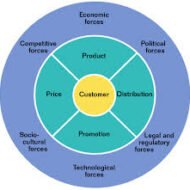
Key Components of Marketing System The core marketing system of a company comprises the suppliers, company, marketing intermediaries and target customers. The success of the company is also affected by competitor’s presence and other segments of public. The management has to watch and plan for all these factors to serve and satisfy the specified set of needs of a chosen target market. Supplier Selection: A company has to choose suppliers who offer the best mix of quality, delivery schedule, guarantee and low cost. Say, a firm involved in manufacturing confectioneries has to procure sugar, cocoa, caramel, milk powder; Labor, equipment, fuel, electricity and other factors of production are also to be obtained. If the company’s product has a good market, it can opt for continuous production. If it is a growing firm, it cannot go for voluminous production, but only supply goods against confirmed orders. In either case, the choice of suppliers is determined by one major factor called ‘cost’. Of course, one can never compromise on quality and so the company has to decide whether to purchase the inputs or make its own. Pic Courtesy : 5 Steps to Successful Supplier Selection The relationship of a company with the suppliers should be of a long-term nature, since any sudden change in the supplier’s environment will have a substantial impact on the company’s marketing operations. Sudden supply shortages, labor strikes and other events can interfere with the fulfillment of delivery promises to customers. This will result in sales decline in the short run and loss of goodwill in the long run. Back orders lead to loss of customers and in course of time their trust. The business firms must plan for alternate source of supply to avoid the risk of over-dependence on any one source of supplier. Company The marketing department has to work in tandem with the other departments of the company namely, finance, production, personnel and research and development, while designing and implementing its marketing plans. Finance department – has to be consulted regarding the availability and deployment of funds to carry out the marketing plans. Production department – to gauge market demand and to decide on the supply of products based on demand. R and D – new product development. Equally important is Digital Marketing which is considered to be an integral part of your promotional activities – What you are seeing above is a depiction of tools that help you in marketing your products online. Marketing intermediaries: Channel members are the link between the company and the customers. Agents and middlemen find customers who are wholesalers or retailers to take on the title and sell the merchandise. Also there are physical distribution firms who assist in stocking and moving goods from the warehouse to the destinations. The marketing executives have to deal with these intermediaries prudently in order to enhance the operational efficiency of the marketing function. Logistic firms, shippers and airliners help to move the goods from one location to another. Competitors: All the business firms in a particular market segment vie for the same resources and customers. A car manufacturing company in an automobile industry has to compete with other car manufacturers as well as with two wheelers. This implies that competition may come in different forms and each company has to identify potential threat from competitors, study their activities and capture their moves to win over the competition. Public: A company has to keep a close watch on people’s preferences to satisfy their requirements and also it is expected to give back something to the society in the form of social welfare measures. Employees belonging to different culture groups with differing attitudes,...










